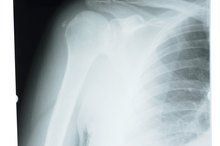What does fact checked mean?
At Healthfully, we strive to deliver objective content that is accurate and up-to-date. Our team periodically reviews articles in order to ensure content quality. The sources cited below consist of evidence from peer-reviewed journals, prominent medical organizations, academic associations, and government data.
- American Academy of Family Physicians: Nutrition: Determine Your Calorie Needs
- American Council on Exercise: Trimming Off the Fat
The information contained on this site is for informational purposes only, and should not be used as a substitute for the advice of a professional health care provider. Please check with the appropriate physician regarding health questions and concerns. Although we strive to deliver accurate and up-to-date information, no guarantee to that effect is made.
Weight Loss After Lumbar Fusion
A lumbar fusion is major surgery, and it takes about three months to heal, according to Spine-Health 14. The immediate postoperative period is not a time to try to lose weight, and The Hospital for Special Surgery of the Women’s Sports Medicine Center in New York says you should not try to crash diet before or after surgery. Don't try to lose weight after a lumbar fusion without your doctor’s approval. To lose weight, you must decrease your caloric intake, increase your exercise or do both.
If you are experiencing serious medical symptoms, seek emergency treatment immediately.
Healing After Lumbar Fusion
A lumbar fusion is a surgery designed to stop the motion of one or more vertebrae 14. Vertebral movement causes pain and can make the spine unstable. Sometimes the surgeon places bone grafts between the vertebrae, or metal rods, plates and screws may be used to stabilize the spine. You should ensure that you eat a well-balanced diet with adequate protein for healing along with whole grains, legumes, fresh fruits and vegetables for vitamins, minerals and fiber. Once your wound has healed and you have the approval of your surgeon, you can consider a weight-loss diet.
- A lumbar fusion is a surgery designed to stop the motion of one or more vertebrae 1.
- Vertebral movement causes pain and can make the spine unstable.
Your Caloric Needs
Will a Torn Rotator Cuff Heal Without Surgery?
Learn More
Your caloric needs will vary according to gender, age and activity, according to the American Academy of Family Physicians 2. A woman between the ages of 31 and 50 who is sedentary needs about 1,800 calories a day; if she is very active, she needs about 2,200 calories a day. A man of the same age will need between 2,200 and 3,000 calories to maintain his weight. A weight loss of 1 to 2 pounds a week is sufficient, according to the American Council on Exercise 3. To lose a pound a week when you are eating at maintenance level for your current weight, decrease your daily intake by 500 calories.
Exercise
An exercise program should include aerobic exercise, strength training and flexibility exercises, according to MayoClinic.com. Exercise promotes weight loss and can help you regain fitness after your surgery. Don’t start an exercise program without your surgeon’s approval. Repetitive bending, stretching and twisting are not recommended for the first three months after surgery, according to Spine-Health, but walking is encouraged 1. Start slow and increase the intensity of your exercise program as your fitness increases.
- An exercise program should include aerobic exercise, strength training and flexibility exercises, according to MayoClinic.com.
- Repetitive bending, stretching and twisting are not recommended for the first three months after surgery, according to Spine-Health, but walking is encouraged 1.
Choose Your Exercise Wisely
What Is the Difference Between a Herniated Disc & a Bulging Disc?
Learn More
Some exercises are better than others after lumbar surgery. Walking or swimming are good choices, as both provide aerobic exercise without jarring the spine. Cycling may be another possible exercise, but pay attention to any symptoms of pain or stiffness in the back. Running and other high-impact exercises may cause excessive stress on the spine. Strength training helps build muscle and can promote weight loss by increasing your metabolism, according to the American Council on Exercise 3.
- Some exercises are better than others after lumbar surgery.
- Walking or swimming are good choices, as both provide aerobic exercise without jarring the spine.
Related Articles
References
- Spine-Health: Lumbar Spinal Fusion Surgery
- American Academy of Family Physicians: Nutrition: Determine Your Calorie Needs
- American Council on Exercise: Trimming Off the Fat
- Spine-Health: Is Lumbar Fusion Surgery a Reliable Procedure?
- Putzer M, Ehrlich I, Rasmussen J, Gebbeken N, Dendorfer S. Sensitivity of lumbar spine loading to anatomical parameters. J Biomech. 2016;49(6):953-958.
Writer Bio
Beth Greenwood is an RN and has been a writer since 2010. She specializes in medical and health topics, as well as career articles about health care professions. Greenwood holds an Associate of Science in nursing from Shasta College.







